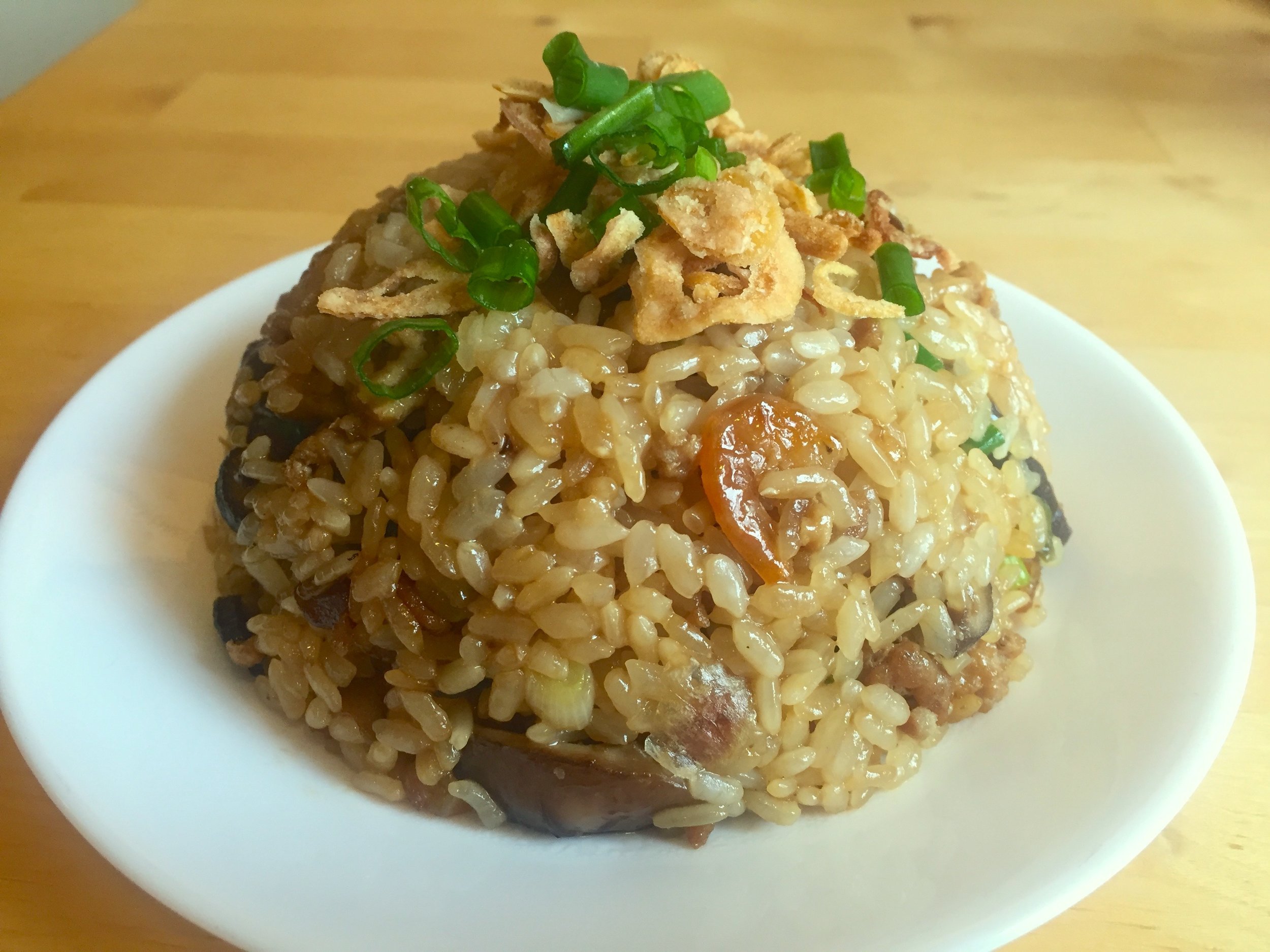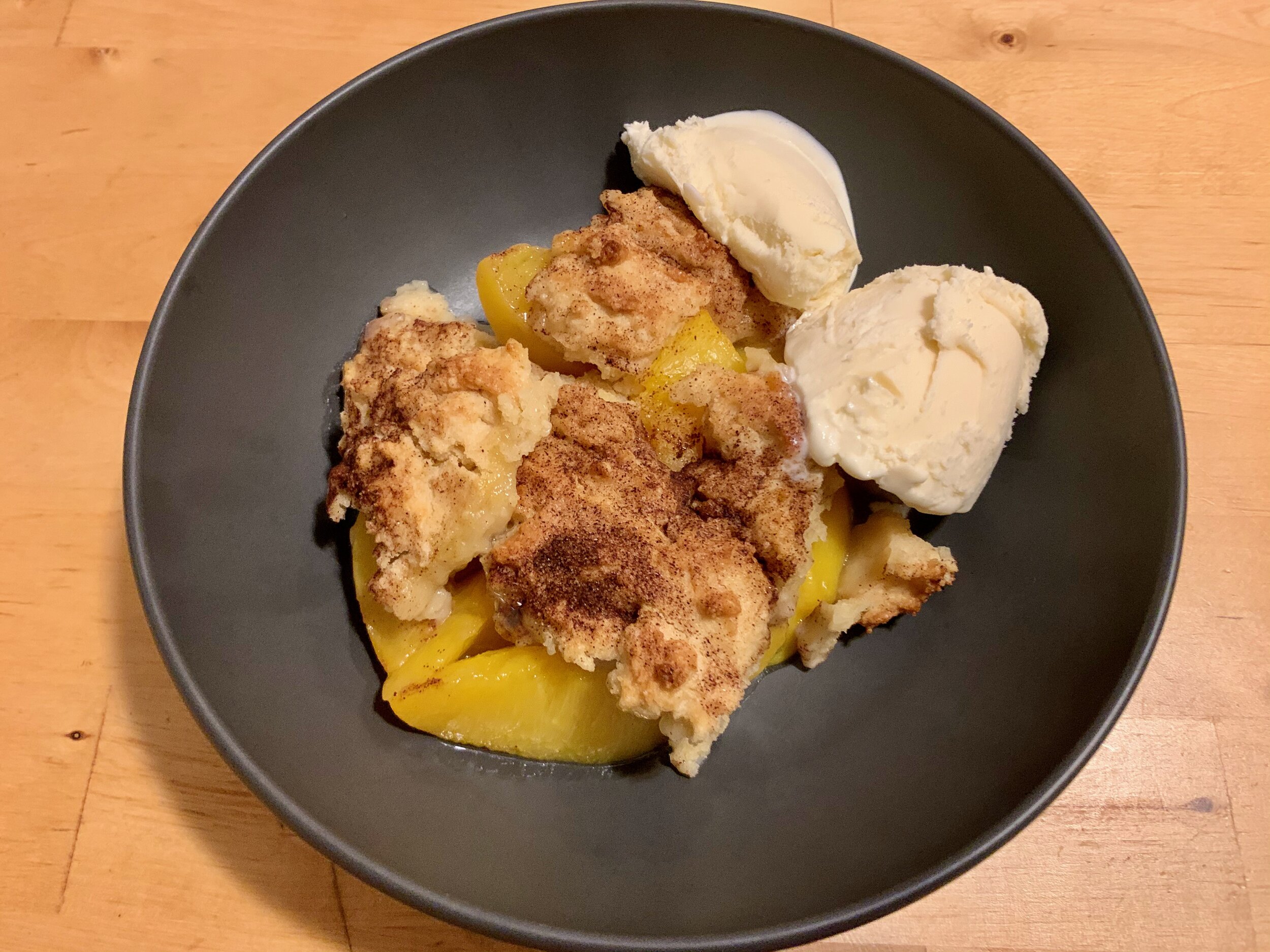Mango Sticky Rice

ข้าวเหนียวมะม่วง (Khao Niao Mamuang)
Mango sticky rice is a delightful dessert, a perfect way to showcase in-season mangoes! This rice dish can be found across Southeast Asia, where both mangoes and sticky (glutinous) rice have been cultivated for centuries. While the dish is most commonly associated with Thailand, it is also commonly served in Malaysia, Laos, and Cambodia.
Ingredients
3 ripe mangoes
1 cup sticky rice
1 can (14 oz) coconut milk
3 tbsp white sugar
1/4 tsp salt (or to taste)
1 tbsp toasted sesame seeds
This dish really only works with ripe mangoes—the rice pudding is here only to complement the fresh fruit. In Southeast Asia, the Man Doc Mai mango, which is very sweet and low in fiber, is most commonly used[1]. The closest substitutes found in North American supermarkets are Ataulfo mangoes, grown in Mexico. We recommend that you use whichever cultivar of the fruit is most readily available in your area.
Sticky rice, also known as sweet rice (though it does not taste sweet) and glutinous rice (though it is gluten free), differs from other varieties of rice in that its starch consists almost entirely of amylopectin, with very little amylose.[2] Because amylopectin is more water soluble, sticky rice releases much more starch into its environment when cooked, thickening the water as a roux of cornstarch slurry would and creating a sticky, chewy texture. Most sticky rice found in supermarkets have been milled. However, you can sometimes find unmilled sticky rice with an intact coat of bran, which will appear purple or black (the sticky rice equivalent of standard brown rice). Sticky rice also exists in both long-grain and short-grain forms. For this recipe, we will be using one cup of milled, short-grain sticky rice.
A rice cooker is the easiest way to cook sticky rice—combine one cup of sticky rice with 1 and ¼ cups of water and cook according to the manufacturer’s instructions. If your rice cooker has a dedicated sticky rice setting, use it! If your rice cooker doesn’t have a sticky rice setting, though, you are better off steaming the rice or cooking it on the stovetop. Soak the rice in cold water for about an hour before starting to cook it. After the soak, proceed as you would when cooking other type of rice. Be aware that sticky rice burns more readily than normal white rice. Also, be aware that because of the amount of starch released by sticky rice grains, draining excess water at any point in the cooking process is not an option. If you start with too much water, you will end up a gluey, unsalvageable mess. Regardless of your rice cooking method, it is better to err on the side of less water than more water, adding water gradually if the rice needs it.
While the rice cooks, we can work on the coconut sauce. In a small pot, bring the coconut milk to a gentle simmer over medium-low heat, stirring occasionally so that the bottom of the pot does not scorch. Then add 3 tablespoons of white sugar and ¼ teaspoon of salt to the coconut milk, stirring until the sugar is fully dissolved. A note on the salt—traditionally the coconut sauce is both sweet and salty, to help balance the sweetness of the fruit. In many preparations found in westernized restaurants, this salty note is toned down significantly, to create a less complex, sweeter dish. We recommend keeping the salt in this dish, but feel free to dial it up or down to your taste. Continue to simmer and stir the sauce for about 5 minutes to slightly reduce and thicken the mixture. Then remove the coconut sauce from the heat and set aside.
When the rice is cooked, transfer it to a large heatproof bowl. Pour about 1 cup of the coconut sauce over the rice and stir well to combine. The rice will absorb most of this liquid as it cools. Cover the bowl in plastic wrap and let stand at room temperature for about half an hour. After this, the rice can be served immediately, or stored in the refrigerator until service. The rice should be served warm—you can reheat it in the microwave if necessary.
When you are ready to serve, peel and slice your mangoes. The best way to do this is to carve the cheeks of the mango off the core, cut these cheeks into slices against the grain (mango fibers tend to run pole to pole), then to separate the mango from the skin with a spoon. Arrange some mango slices on each serving plate, together with a scoop of the coconut rice pudding topped with toasted sesame seeds. Serve the remaining coconut sauce on the side.
Substitutions
This rice pudding is sometimes dyed a variety of colors. If you’d like to do this, dissolve the dye of choice in hot water, let cool, and use that water to cook the rice. Common natural dyes include pandan leaves (green), butterfly pea flowers (blue), or turmeric powder (yellow). If you don’t have access to a rice cooker, you can instead steam the rice by lining a steamer with a cheesecloth and steaming it, covered, for about 20 minutes or until the rice is cooked. Sticky rice cannot be cooked by boiling due to the large amount of starch it throws off.
If you don’t have good mangoes available but really want to make the rice pudding, we recommend serving alongside whatever fresh fruit you have on hand—pineapples in particular work quite well here.
[1] The ancestral mango tree likely is native to South and Southeast Asia, but modern mango cultivars can be divided into two genetically distinct populations, an Indian group which produces monoembryonic fruits and a Southeast Asian group which produces polyembryonic fruits. Given these differences, it is possible that the mango was domesticated independently multiple times.
[2] It has been determined that the abnormally high amylopectin content of sticky rice is the result of a single point mutation which was then selected for by early farmers. Olsen et al., Molecular Evidence on the Origin of Glutinous Rice, Genetics, 2002.
Recipe
Prep Time: 10 min Cook Time: 30 min Total Time: 1 hr
(+20 min inactive)
Difficulty: 1/5
Heat Sources: rice cooker, 1 burner
Equipment: pot, heatproof bowl
Servings: 4
Ingredients
3 ripe mangoes
1 cup sticky rice
1 can (14 oz) coconut milk
3 tbsp white sugar
1/4 tsp salt (or to taste)
1 tbsp toasted sesame seeds
Instructions
1. In a rice cooker or in a pot on the stove, cook the sticky rice with 1¼ cups of water.
2. While the rice cooks, bring the coconut milk to a gentle simmer over medium-low heat.
3. Add the sugar and salt to the coconut milk and stir until the sugar is dissolved. Continue to simmer for about 5 minutes, reducing the mixture slightly. Then remove the coconut sauce from the heat.
4. When the rice is cooked, transfer it to a heatproof bowl. Pour about 1 cup of the coconut sauce over the rice and stir well to combine.
5. Cover the rice with plastic wrap and let stand for half an hour at room temperature, until the liquid has been absorbed.
6. When ready to serve, peel and slice the mangoes. On each serving plate, arrange some mango slices together with some of the coconut rice pudding, with extra coconut sauce on the side. Top with toasted sesame seeds and serve.














